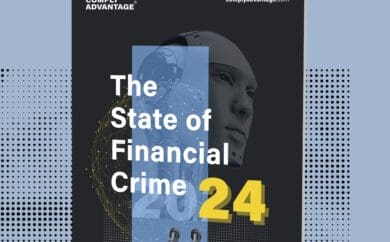 Featured
Featured
Reforms meant to strengthen Australia’s AML/CFT rules came into force on Friday, June 18. Dubbed Tranche 1.5, these reforms touch on customer due diligence, correspondent banking, information sharing, and cross-border payment reporting.
More specifically, with Tranche 1.5, the Australian Transaction Reports and Analysis Centre (AUSTRAC) makes it explicit that reporting entities must not provide a designated service until after they perform the proper customer due diligence. Nevertheless, the government agency also expands the ability of those entities to rely on third-party due diligence in specific circumstances — and the latter may help to offset some of the regulatory burden imposed by the former.
Additionally, the new law strengthens due diligence requirements for entering into correspondent banking relationships and bans financial institutions outright from entering into a relationship with an institution that permits shell banks to use their accounts.
Cross-border payment reporting is more streamlined with the introduction of a single reporting requirement for all monetary instruments, and information sharing abilities with both domestic and foreign entities have been expanded and clarified. Lastly, AUSTRAC has made it slightly easier to inform the third party about the existence of a suspicious matter report; it’s still prohibited, but the reforms introduce a few new exceptions to the rule.
The Australian government passed the reforms last year, in December 2020, via the Anti-Money Laundering and Counter-Terrorism Financing and Other Legislation Amendment Bill 2020 (the Amendment). It’s a step that’s been a long time coming: the legislation was stalled for over a year before the Australian House of Representatives brought it up for a vote. The changes themselves were recommended following a statutory review of the country’s primary AML/CFT legislation in 2014.
Nevertheless, many view these changes as incremental. Additional AML reforms, known as Tranche 2, are reportedly on the horizon, though it’s anyone’s guess when they’ll be enacted. Reforms that would bring high-risk professions such as real estate agents, accountants, and lawyers under the umbrella of the country’s AML/CFT law were floated back in 2006 when the original AML/CFT legislation was passed. Such reforms, it was hoped, would help stop bad actors from exploiting and laundering money through Australia’s property market, which currently receives little oversight.
Yet efforts to pass those changes have languished — first because of the global financial crisis of 2008 and subsequently because of shifting priorities and opposition from the would-be-regulated parties. When asked about any concrete plans to implement Tranche, the response from AUSTRAC was noncommittal: “Austrac and Home Affairs are working closely on improving Australia’s AML/CTF regime, by progressively implementing the recommendations of the 2016 statutory review. Any potential future reforms will be reviewed in a careful and considered way and industry will be fully consulted.” This leaves many to wonder whether the legislation will be passed at all.
Originally published 24 June 2021, updated 18 November 2021
Disclaimer: This is for general information only. The information presented does not constitute legal advice. ComplyAdvantage accepts no responsibility for any information contained herein and disclaims and excludes any liability in respect of the contents or for action taken based on this information.
Copyright © 2024 IVXS UK Limited (trading as ComplyAdvantage).



 EN
EN